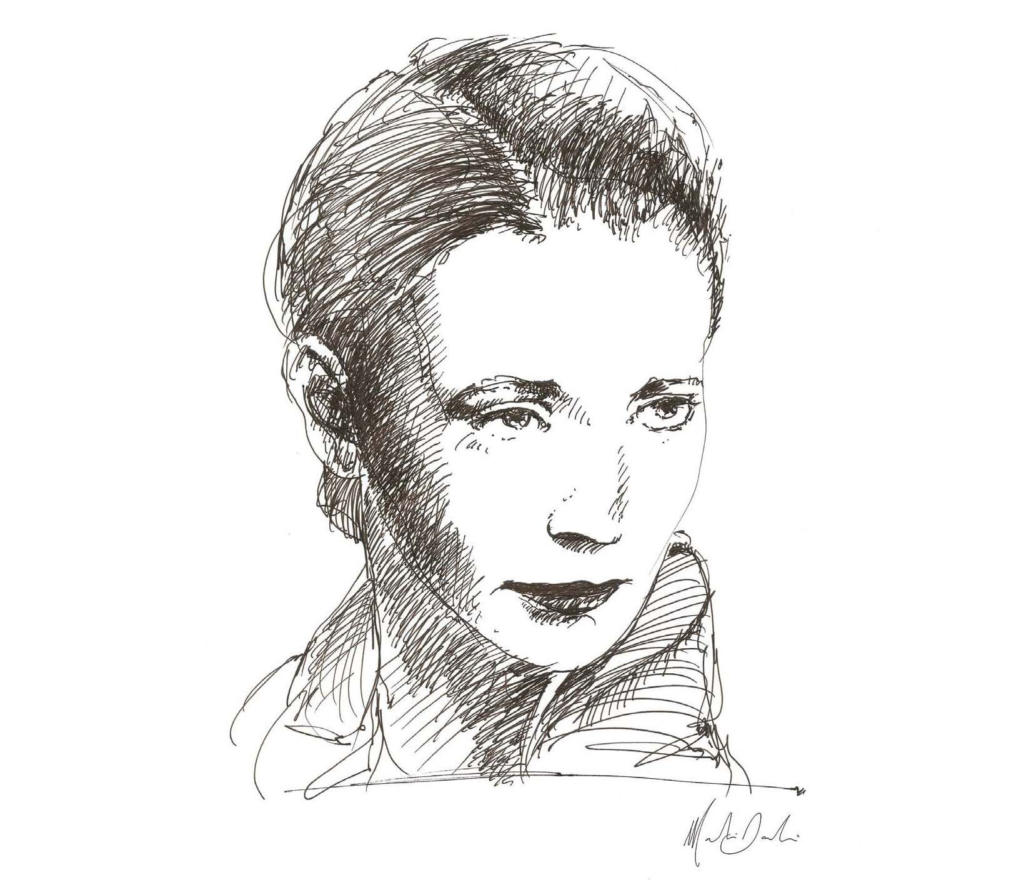 Anna Maria Ortese was born in Rome in 1914. After much wandering in Italy and around the world, she came back, as a mature and established writer, finding a quiet place, away from the places of the revolt. Rome was for her also a place of inspiration and ideal center, halfway between the two dimensions in which she moved, the soft colors and reflections of the North and the annihilating light of the South, immersed in another time.
Anna Maria Ortese was born in Rome in 1914. After much wandering in Italy and around the world, she came back, as a mature and established writer, finding a quiet place, away from the places of the revolt. Rome was for her also a place of inspiration and ideal center, halfway between the two dimensions in which she moved, the soft colors and reflections of the North and the annihilating light of the South, immersed in another time.
 A VOYAGE IN THE VISIONARY REALISM OF ANNA MARIA ORTESE : THE TENACITY OF THE LOOK AND THE PAIN OF “NON-EXISTENCE”
A VOYAGE IN THE VISIONARY REALISM OF ANNA MARIA ORTESE : THE TENACITY OF THE LOOK AND THE PAIN OF “NON-EXISTENCE”
“I’ve always been alone, like a cat,” writes of herself Anna Maria Ortese. A short sentence, apparently weak, almost an unpretentious lament, deprived even of consolation. In fact in this fragment, in this thin sliver of glass, is enclosed a large sky that dominates and oppresses, a flare which imposes the vision of the contours. Loneliness is common to many human beings. But for some who, despite their own will, have the gift and the pain to perceive more strongly the bright lights and the gray halo of existence, it is a burden of a greater, almost unbearable weight. It is also inevitable to think of the constant almost physical presence of this solitude, in the many trips that Ortese has faced, changing cities, houses, people around her, but remaining always and despite everything alone. Even thinking about contacts with the literary world which contrasted her but also appreciated and honored her, almost grudgingly but clearly, the occasion on which she won the Premio Strega, for example, but also in many other circumstances, it is easy to imagine her discomfort, her desire to return to her home, next to her sick sister, to cultivate an isolation that was care and disease at the same time.
 Yet, in the fragment of glass from which took inspiration this brief attempt of examination, there is also a reflection of a more vivid and sharper angle. Quite unintentionally, in all likelihood, to Ortese who has expressed it, but perceptible, perhaps with a vital and voluntary force for us. “Alone like a cat”, noted the writer. The first thing to remark is a very personal and oblique approach that has always characterized even the prose of Ortese. Generally we say, “alone like a dog“. Usually a cat is either domestic, and therefore it is not alone, or it is alone just when it wants, because it chooses it, or because of necessity, should it be only the need to defend itself from the humans or from other animals, or because in loneliness it can sleep, think and look, and observe the frenzy of life, possibly without being seen. The impression is that Ortese, in her long and complicated journey of human being and writer, has observed the world with a voracious curiosity, capable of devouring herself first, her own mind and energy. But watching and recording, with the sincerity of someone who is outside of all the herds and all the congregations, was the luxury that she allowed himself, ready to pay for it with exclusion and imprisonment, in the strict sense, in the four walls where she cultivated the silences and the words, her writings, the sheets with which she struggled every day to try to combine fantasy with reality.
Yet, in the fragment of glass from which took inspiration this brief attempt of examination, there is also a reflection of a more vivid and sharper angle. Quite unintentionally, in all likelihood, to Ortese who has expressed it, but perceptible, perhaps with a vital and voluntary force for us. “Alone like a cat”, noted the writer. The first thing to remark is a very personal and oblique approach that has always characterized even the prose of Ortese. Generally we say, “alone like a dog“. Usually a cat is either domestic, and therefore it is not alone, or it is alone just when it wants, because it chooses it, or because of necessity, should it be only the need to defend itself from the humans or from other animals, or because in loneliness it can sleep, think and look, and observe the frenzy of life, possibly without being seen. The impression is that Ortese, in her long and complicated journey of human being and writer, has observed the world with a voracious curiosity, capable of devouring herself first, her own mind and energy. But watching and recording, with the sincerity of someone who is outside of all the herds and all the congregations, was the luxury that she allowed himself, ready to pay for it with exclusion and imprisonment, in the strict sense, in the four walls where she cultivated the silences and the words, her writings, the sheets with which she struggled every day to try to combine fantasy with reality.
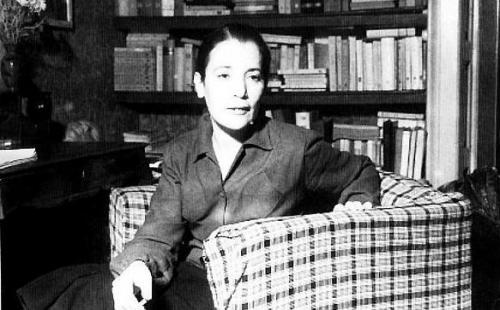 Anna Maria Ortese was born in Rome in 1914, from a modest family. During World War I she lives first in Puglia then in Portici and then in Potenza. After the war her father built a house in Libya. Shortly after, however, he returned to Italy and specifically in Naples. Naples is the fundamental relationship of the existence of Ortese. More than a place we can talk about a relationship, a passionate and tormented history lasting a lifetime.
Anna Maria Ortese was born in Rome in 1914, from a modest family. During World War I she lives first in Puglia then in Portici and then in Potenza. After the war her father built a house in Libya. Shortly after, however, he returned to Italy and specifically in Naples. Naples is the fundamental relationship of the existence of Ortese. More than a place we can talk about a relationship, a passionate and tormented history lasting a lifetime.
“I have lived a long time in a city truly exceptional. Here, […] all things, good and bad, health and the spasm, the singers of happiness and pain […] all these noises were so tightly narrow, confusing, mixed with each other, that the stranger who came to this city had […] a very strange impression, as an orchestra whose instruments, composed of human souls, no longer obeyed the smart baton of the Maestro, but each of them expressed its own behalf arousing effects of wonderful confusion “(The Buried Infanta, Adelphi, Milan, 1994, p. 17).
This is one of the portraits that the writer outlines with meticulous passion of the face, of one of the possible faces, of her beloved. But the city in which the freedom of expression of people is absolute and authentic is too vivid and piercing, perhaps, even for her. For those who, like the Ortese, long a bridge that can bring together the banks of truth and dream, colorful but also raw reality, an elusive a city like Naples is unsettling, it is an attraction so intense that it becomes painful. A place in which one finds himself, but surely goes astray.
Perhaps it is no coincidence that one of the most famous books that Ortese dedicated to the city of Naples is characterized in the title by a denial: The sea doesn’t touch Naples. As if to underline that all we can know, and have, of this vast set of alleys and lives, is what we do not know and what we do not possess. Or, more simply and more complicated at the same time, we could assume that the logical paradox and the geographic base of the title is a position, a defensive trench: to deny the matter of fact in order to escape too much truth and too much mystery, “all things, good and bad, health and the spasm, the singers of happiness and pain” generate a confusion that is wonderful but also difficult to reconcile with that love for solitude, with its equally beautiful and equally clearly necessity.
 The Port of Toledo, then, the novel to which the Ortese has devoted a lifetime, like a huge canvas of Penelope, is the answer, or the best way to prolong forever a question, a persistence of conflicting ideas and feelings : the irresistible attraction and the need to flee to another place that is mostly internal, inner, then another paradox, the return to a starting point that can not be accepted as stable. This is the conviction of the author, a constant escape, a diaspora of mind and heart to return to what corresponds to her but she must constantly escape from.
The Port of Toledo, then, the novel to which the Ortese has devoted a lifetime, like a huge canvas of Penelope, is the answer, or the best way to prolong forever a question, a persistence of conflicting ideas and feelings : the irresistible attraction and the need to flee to another place that is mostly internal, inner, then another paradox, the return to a starting point that can not be accepted as stable. This is the conviction of the author, a constant escape, a diaspora of mind and heart to return to what corresponds to her but she must constantly escape from.
 In January of 1933 her brother Emanuele dies in Martinique. The loss is for her the door to write poetry. Published a few months later in the magazine “The Literary Fair”, her poems gained her the first encouragement to write. In 1943 she finished his first novel, “Redskin“. The theme is consistent with her approach, the look and the point of observation that are suitable to her. She herself says that in this story “is foreshadowed a fundamental theme of [her] life: the shock of large masses of humanity, civilization with no more spaces and innocence, large enclosures where common men will be conducted.”
In January of 1933 her brother Emanuele dies in Martinique. The loss is for her the door to write poetry. Published a few months later in the magazine “The Literary Fair”, her poems gained her the first encouragement to write. In 1943 she finished his first novel, “Redskin“. The theme is consistent with her approach, the look and the point of observation that are suitable to her. She herself says that in this story “is foreshadowed a fundamental theme of [her] life: the shock of large masses of humanity, civilization with no more spaces and innocence, large enclosures where common men will be conducted.”
In 1937 she publishes the short stories Angelic pain. In them again shines the desire to mediate between corporeal and immaterial, projecting the human in a further dimension which however is also sorrow, unrelenting eternal return.
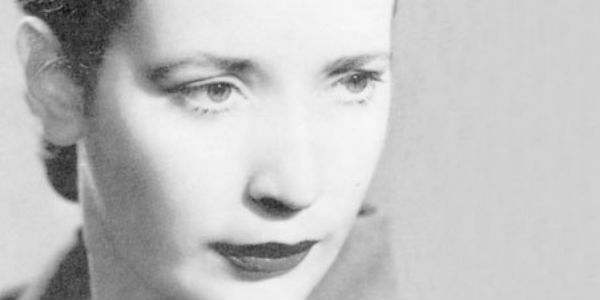 Later her artistic inspiration seems to fade. She moves to various cities of northern Italy, Florence and Trieste. In 1939 she was in Venice, where she finds a job as a proofreader at Gazzettino.
Later her artistic inspiration seems to fade. She moves to various cities of northern Italy, Florence and Trieste. In 1939 she was in Venice, where she finds a job as a proofreader at Gazzettino.
At the outbreak of World War II she returned to Naples, and contributed to the magazine “South”, where, among others, she knows Luigi Compagnone and Raffaele La Capria.
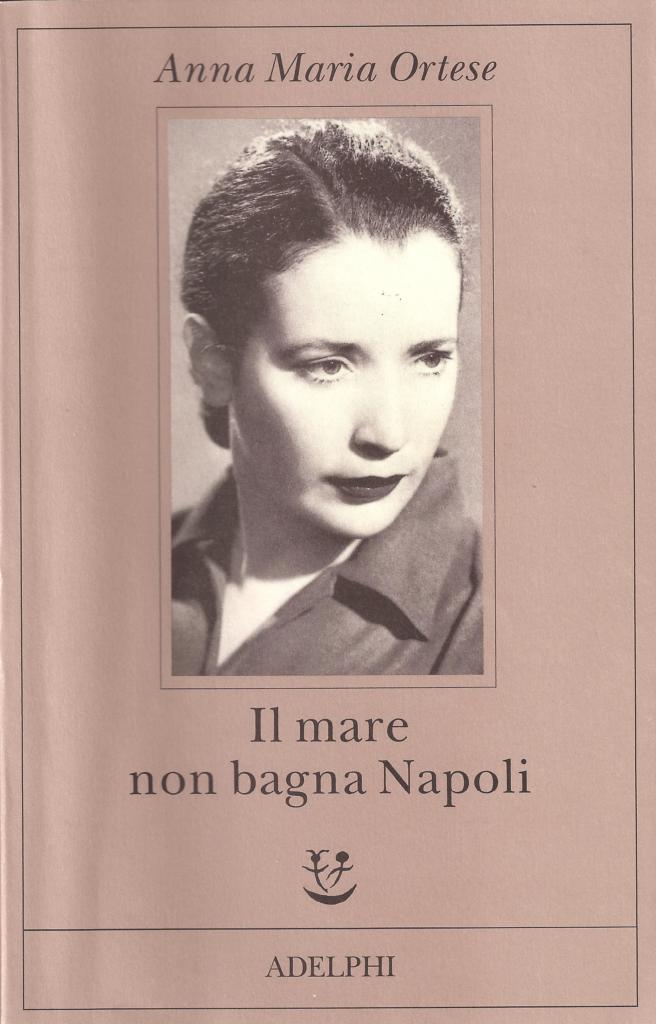 In 1953 she publishes The sea doesn’t touch Naples, which I have mentioned above, one of the key novels, from the literary and human point of view. The last story of the book, “The silence of reason”, dedicated to the Neapolitan writers, arouses violent opposition in the city. It seems a message addressed to a tormented love, a letter deliberately sprinkled with poison. To create a rift, splitting from a feeling of too tight, so great as to be annihilating. From that moment, the Ortese will struggle to return to Naples. It will be difficult for her to return in person, because mentally the tie remains very much alive, as it has been said. In addition to The port of Toledo in 1975, also The grieving Cardillo written many years later, in 1993, testifies and confirms a thought never turned off, a deep penetration.
In 1953 she publishes The sea doesn’t touch Naples, which I have mentioned above, one of the key novels, from the literary and human point of view. The last story of the book, “The silence of reason”, dedicated to the Neapolitan writers, arouses violent opposition in the city. It seems a message addressed to a tormented love, a letter deliberately sprinkled with poison. To create a rift, splitting from a feeling of too tight, so great as to be annihilating. From that moment, the Ortese will struggle to return to Naples. It will be difficult for her to return in person, because mentally the tie remains very much alive, as it has been said. In addition to The port of Toledo in 1975, also The grieving Cardillo written many years later, in 1993, testifies and confirms a thought never turned off, a deep penetration.
 In one of her transfers to Milan she writes the stories Silence in Milan, another emblematic title, as if to contrast two worlds which are two existential and expressive dimensions belonging to her, the exuberance of the South and the need of more muted colors and tones, almost blurred. The writer in the early years has a special relationship with Milan.
In one of her transfers to Milan she writes the stories Silence in Milan, another emblematic title, as if to contrast two worlds which are two existential and expressive dimensions belonging to her, the exuberance of the South and the need of more muted colors and tones, almost blurred. The writer in the early years has a special relationship with Milan.
In the 50s, began her love affair with the chief editor of L’Unità, Marcello Venturi. Even Milan with time turns into a place of exile. With the cities, as well as with the people, the writer felt an attraction that at some time turns, changes sign, perhaps for an excess of affection or a knowledge that takes shape, a mystery that, once penetrated, becomes banal or scares. The writer will leave Milan, finally, during the years of the youth protest, in 1969, after starting here the first draft of The Port of Toledo, to take refuge in Rome. Faced with the events of history, the uprisings and conflicts, the Ortese escapes once again, first in a city, then in a more intimate place, apt for isolation, Rapallo. There she will live alone in the sole company of her sister, Mary, painter afflicted by disability, almost an alter ego, a mirror in which she could observe and recognize herself.
 It is easy to imagine that in the quiet secluded Rapallo, surrounded by hard working and from the Ligurian quick dialect, Ortese happened, by contrast, to rethink the atavistic slowness of the South, that world so different from the muffled mist. Ortese perceived in the South the most obvious consequence of inner emptiness suffered by her people. She notes, among other things, that in Vieste, in Puglia, “it seemed that [the people] have lost the ability to think, for hundreds of years, not expecting anyone and anything.” This statement, in fact, this absolute proof, expressed by the body as well as the mind, of despair, understood in the precise and unrelenting sense of “hopelessness”, in all probability has always horrified the writer. Perhaps because, also in this case, she recognized in it much of her own feelings. Her own answer was writing: to shape, and give voice, to the lack of support points, to that dimension loved yet alien, fiercely alien, incomprehensible because submerged by the truth of the world.
It is easy to imagine that in the quiet secluded Rapallo, surrounded by hard working and from the Ligurian quick dialect, Ortese happened, by contrast, to rethink the atavistic slowness of the South, that world so different from the muffled mist. Ortese perceived in the South the most obvious consequence of inner emptiness suffered by her people. She notes, among other things, that in Vieste, in Puglia, “it seemed that [the people] have lost the ability to think, for hundreds of years, not expecting anyone and anything.” This statement, in fact, this absolute proof, expressed by the body as well as the mind, of despair, understood in the precise and unrelenting sense of “hopelessness”, in all probability has always horrified the writer. Perhaps because, also in this case, she recognized in it much of her own feelings. Her own answer was writing: to shape, and give voice, to the lack of support points, to that dimension loved yet alien, fiercely alien, incomprehensible because submerged by the truth of the world.
In City inadvertent she writes, “everything was still, as if life had petrified,” and in another story she observes, “as we looked around, there was only stone.” In an interview, much later, in 1994, nearly a report or summary she says:
“This nothing, or all, of the universe, this terrible strangeness of the universe in the Western tradition is nothing, and to me is everything . […] We believe to be sitting on something, but we are sitting on nothing. […] Feeling this unspeakable pain maybe I became bad also in The Sea doesn’t touch Naples; perhaps because I came from the time of the war, when I traveled throughout Italy: in the midst of fire, iron, terror. And when I came back I felt the inconsistency of human life, and saw this inconsistency, this southern pain: people brought to nothing, and the euphoria of the people in high places who amused themselves, was madness. “
The “torn universal condition” of the South is not only a timely report, a witness. It is also and above all a paradigm of displacement within the total loss of essential references. As Pasolini claimed, lost authenticity was the only wealth of a world distorted and defeated. Paleoindustrial Italy peasants left their only hope when they abandoned their roots and collapsed into an abyss from which it is impossible to escape.
It is a still area, dark and quiet, within which any possibility of emotion will not survive, except a form of fear so strong as to prevent “to pronounce the word man in its true meaning.” On the one hand, therefore, the Ortese experiences emotions, sounds and lights of reality; on the other, she comes to the “sense of cold and nothing.”
 Her analysis is polished, rough, not a form of complacency or paternalism peppered with a latent sense of superiority. There is a genuine desire to understand, to identify the roots of evil. There are parallels, in some respects, even in the excerpt from The sea doesn’t touch Naples set forth below, with The Leopard by Tomasi di Lampedusa. In particular in reference to “sleep“, to atavistic apathy. The South is scrutinized with an eye polished but sincere. With an authentic penetration, not with the attitude of a colonizer or an entomologist describing a strange and ill insect:
Her analysis is polished, rough, not a form of complacency or paternalism peppered with a latent sense of superiority. There is a genuine desire to understand, to identify the roots of evil. There are parallels, in some respects, even in the excerpt from The sea doesn’t touch Naples set forth below, with The Leopard by Tomasi di Lampedusa. In particular in reference to “sleep“, to atavistic apathy. The South is scrutinized with an eye polished but sincere. With an authentic penetration, not with the attitude of a colonizer or an entomologist describing a strange and ill insect:
“There is in the most extreme and shiny southern lands, a ministry hidden in the defense of nature by reason; a genius mother, of unlimited power, to whose care is entrusted jealous and perpetual sleep. That defense would loosen if for a moment the sweet and cold voices of human reason could penetrate that nature. In this incompatibility of two forces equally strong and not at all reconcilable, as the optimists think, in this terrifying secret as defense of a territory – the vague nature with songs, sorrows, and deaf innocence – and not in a history full of rage, that here is more ‘regulated’, are due to the conditions of this earth, and the miserable end it makes, whenever it organizes an expedition or sends its boldest pioneers. Here the thought can not be servant of that nature, contemplated in any book or art. If you just mention an attempt to critical development, or manifest some try to correct the heavenly shape of this land, you will see that the sea is only water, volcanoes chemical compounds, every possibile desire to change is killed.
Much of this nature, of this maternal and conservative genius, occupies the same kind of man, and keep the oppressed in their sleep: Day and night takes care of this sleep, careful that it is not changed into something more keen. Torn by the lamentations of the son from time to time, but ready to suffocate the sleeper if it shows to move, and hints looks and words that are not exactly those of a sleepwalker. The immobility of the reason has been attributed to other causes, but that does not have a relationship with the real. It is nature that regulates life and organizes the pains of these regions. The economic disaster has no other cause.”
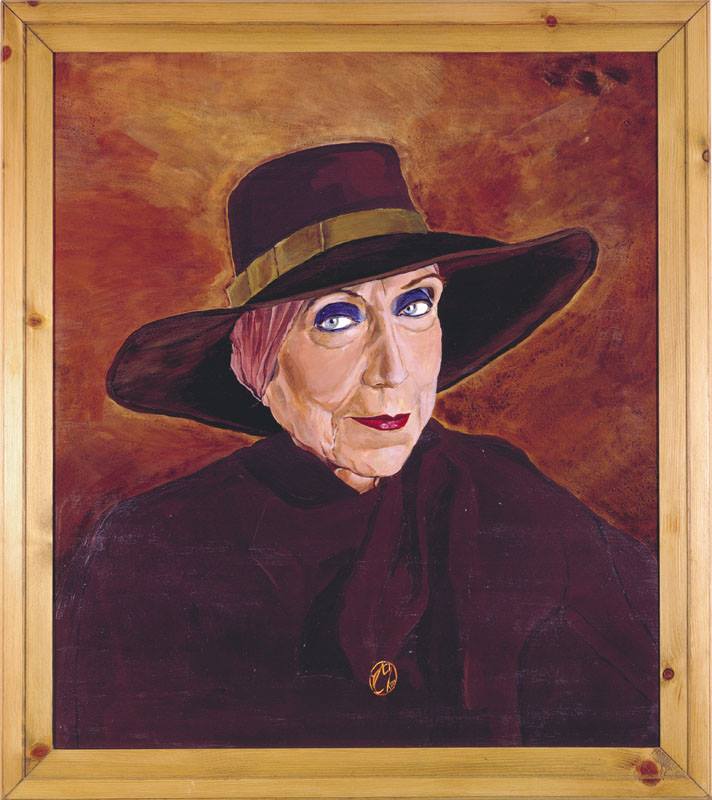 Natural, not only by virtue of a play on words, is also the combination with issues of Leopardi, the oppression that is partly due to the nature and in part to destiny and history.
Natural, not only by virtue of a play on words, is also the combination with issues of Leopardi, the oppression that is partly due to the nature and in part to destiny and history.
The land of the South is “left hanging on the edge of an eternal dawn“: right there, where “Christ is not even past“, in the silence that is also trying to dialogue, silent but strong, with something that you can not see but you feel, often as oppression, stuffiness, immense and blinding glow, where you find the inner meaning of the southern state.
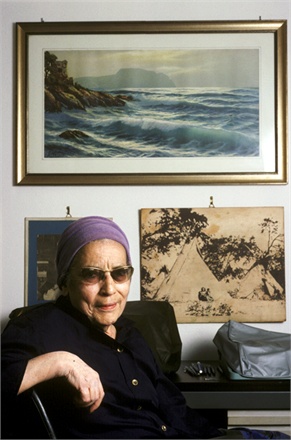 The complexity of the writer would have required a much more detailed analysis. Already from these short notes, it was possible to detect some glimpses, however, beginning a journey to discover the real world of Anna Maria Ortese imagery: a universe where alongside tangible signs of the places and events of the time you feel the attraction and the need to think, in a way, an ideal location, at the same time secluded and protected and surrounded by flowing , almost an improper and spurious utopia, a dream that does not ignore the real meat of the suffering that would redeem if only we could really hope to succeed.
The complexity of the writer would have required a much more detailed analysis. Already from these short notes, it was possible to detect some glimpses, however, beginning a journey to discover the real world of Anna Maria Ortese imagery: a universe where alongside tangible signs of the places and events of the time you feel the attraction and the need to think, in a way, an ideal location, at the same time secluded and protected and surrounded by flowing , almost an improper and spurious utopia, a dream that does not ignore the real meat of the suffering that would redeem if only we could really hope to succeed.
The definition of “gypsy absorbed in a dream“, attributed to Anna Maria Ortese by Italo Calvino is emblematic in this respect. The writer is immersed in the dream but not in sleep. Absorbed, abstract, seemingly unrelated. But she does not sleep, a part of her remains vigilant, present, and sees, with eyes not only real .
“So I thought I’d go to / the Grotta, in the bottom of which, / in a land of light, / has been sleeping, a hundred years, the young fabulous. ”
(Anna Maria Ortese, Pilgrimage to the tomb of Leopardi).

It is due to Ortese, among other things, the verse that gave rise to the title of the film that Mario Martone dedicated to Leopardi. Between the ideal sisters and brothers of Ortese, you can identify authors different from each other but united by a rebellion that manifests itself in the form of an escape to places of election, islands and defensive fortifications, concrete and metaphorical. The Elsa Morante Ortese is similar, for example, for the belief in the “non-existence”, in a “fairytale” always anchored to the truth, in the flesh of humanity. Or with Leopardi “who felt and suffered all our despairs”, but especially with foreign writers such as Thomas Mann and Ernest Hemingway, whom she called “a piece of sea and wind, a piece of the sky, and a stab of the sun.” In another artistic domain, that of painting, you can probably find one that might be called an iconographic representation of meaning and suggestions of Ortese. The books of Ortese have much in common with the metaphysical paintings of De Chirico, those shadows that lengthen dramatically in lifeless, icy squares, apparently born out of an impulse of an abstract mind. Yet, in hindsight, there is always a concrete model and existing upstream observation, careful, true. A truth that is not enough, and it is not the exact definition of surreal. The research, uninterrupted, always in the making, aims to a different reality, removed from the miseries of the contingent. To reach perhaps in a moment of absolute privilege a more intense understanding of the mystery of pain and beauty. To grasp an object, a clock that marks an inaccurate or unlikely hour, the sense of humanity.
Anna Maria Ortese struggled and lived a lifetime to snatch from reality the beauty and magic that would make it livable. Without depriving fantasy of concrete flesh, albeit painful and sorrowful: the truth. Never giving up, paying in person the right to escape, in a temporary exile from the world that is itself a form of presence, through writing, the search for the “land of light” that does not exist but whose research is itself the sense of the trip.
IVANO MUGNAINI si è laureato all’Università di Pisa. È autore di narrativa, poesia e saggistica.
Scrive per alcune riviste, tra cui “Nuova Prosa”, “Gradiva”, “Il Grandevetro”, “Samgha”, “L’ Immaginazione”. Cura il blog letterario DEDALUS: corsi, testi e contesti di volo letterario, www.ivanomugnainidedalus.wordpress.com.
Ha curato la rubrica “Panorami congeniali” sul sito della Bompiani RCS. Suoi testi sono stati letti e commentati più volte in trasmissioni radiofoniche di Rai – Radiouno. Collabora, come autore e consulente, con alcune case editrici. Cura e dirige i “Quaderni Dedalus”, annuari di narrativa contemporanea.
Ha pubblicato le raccolta di racconti LA CASA GIALLA e L’ALGEBRA DELLA VITA , i romanzi IL MIELE DEI SERVI e LIMBO MINORE.
L’algebra della vita (Greco & Greco, 2011), Inadeguato all’eterno (Felici editore, 2008), Il tempo salvato (Blu di Prussia, 2010)
Tra i critici ed autori che si sono occupati della sua attività letteraria ricordiamo: Vincenzo Consolo, Gina Lagorio, Ferdinando Camon, Raffaele Nigro, Giorgio Saviane, Paolo Maurensig ed altri.


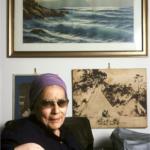





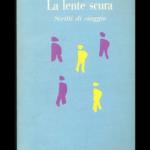


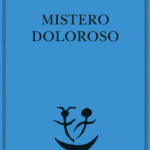




L’ultima esplorarizione nei luoghi del realismo visionario di Anna Maria Ortese…. https://t.co/i6Mx8NlVXj